It’s not easy to get photos of Horned Larks with insects in their beaks. The diet of adults of the species consists largely of seeds year-round but they do feed insects to their young so if you can catch them at the right time of year it’s possible to get photos of them with insects. Yesterday morning in the foothills of the Stansbury Mountains I photographed both a male and a female with insects in their beaks.
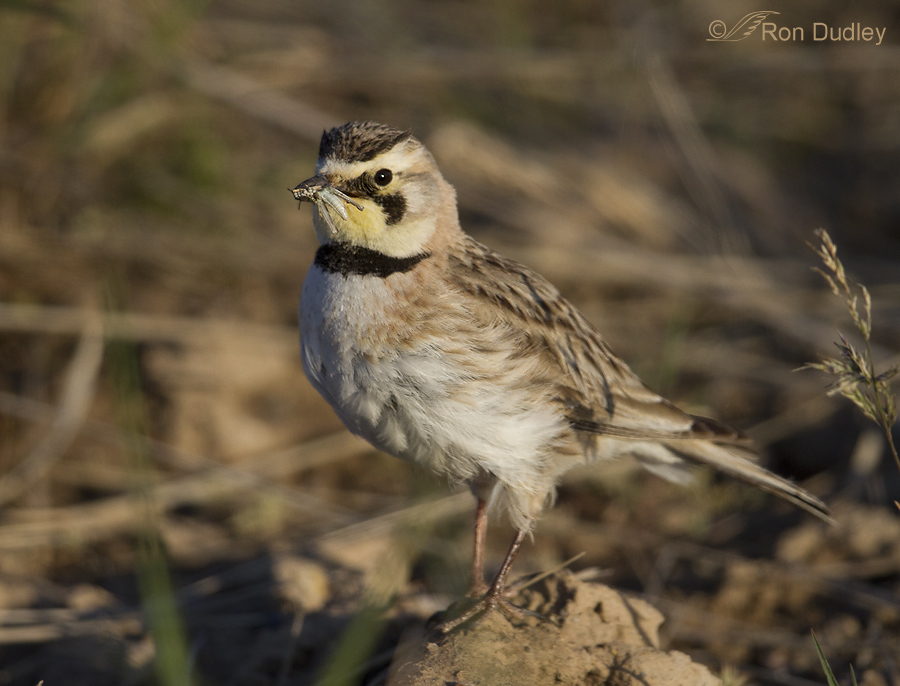
1/2500, f/5.6, ISO 640, Canon 7D, Canon EF500mm f/4L IS II USM +1.4 tc, not baited, set up or called in
I often stop to photograph Horned Larks in this same place alongside a paved rural road and occasionally the birds come in very close to perch on nearby rocks but yesterday this female was too close for the gear I was using. If I’d removed my teleconverter or swapped cameras I’d have missed the shots so I fired away anyway. She had a young grasshopper in her bill…
and a large crop of the same image more clearly reveals that she also had a bunch of what appears to be insect eggs (along with a small twig).
I assumed that she was about to eat them but she fooled me when she scurried around very close to me ( I could barely see her through all the grass) and then suddenly her beak was empty and she wasn’t moving.
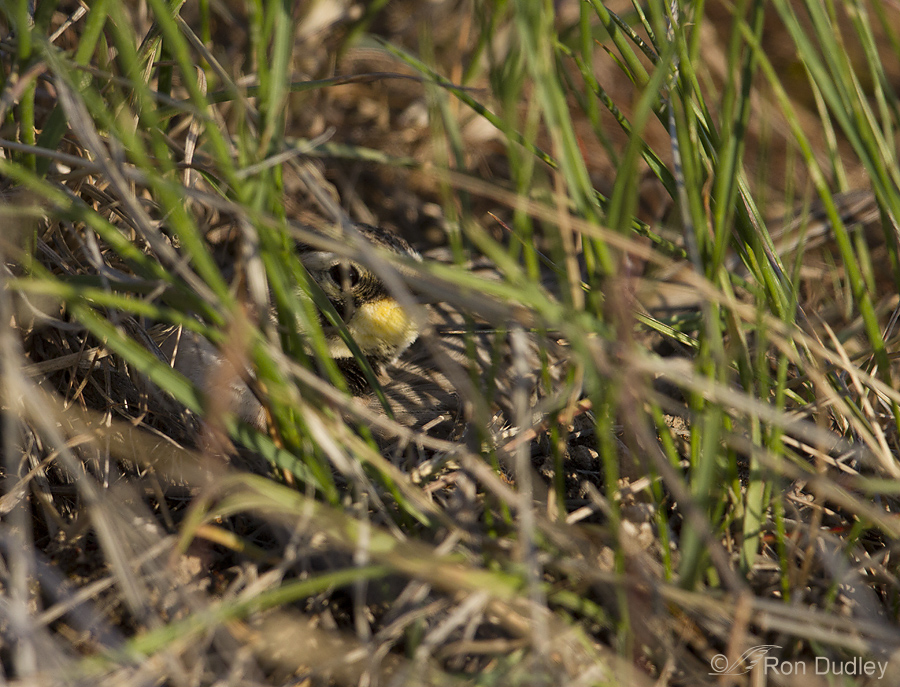
1/1600, f/5.6, ISO 640, Canon 7D, Canon EF500mm f/4L IS II USM +1.4 tc, not baited, set up or called in
It was at that point that I realized she was now on the nest and had apparently given the food items to the chicks and then settled in to brood them. She was incredibly well hidden – here the patch of yellow under the throat and the eye ring are about the only things that give her presence away.
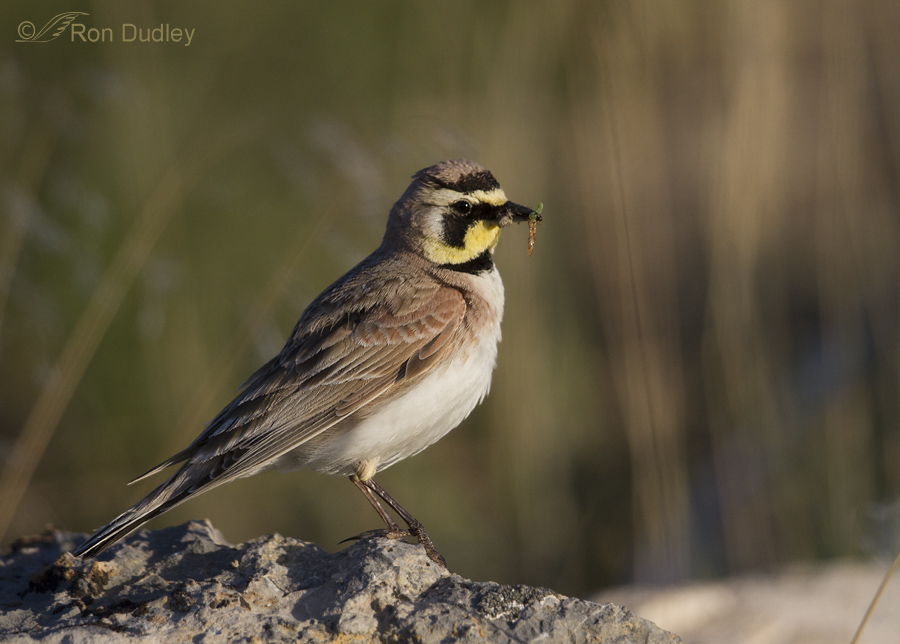
1/2500, f/5.6, ISO 640, Canon 7D, Canon EF500mm f/4L IS II USM +1.4 tc, not baited, set up or called in
Then a few moments later this male flew in close and he was also carrying insects. I suspect him to be the mate of the female and thought he would deliver the food to the nest…
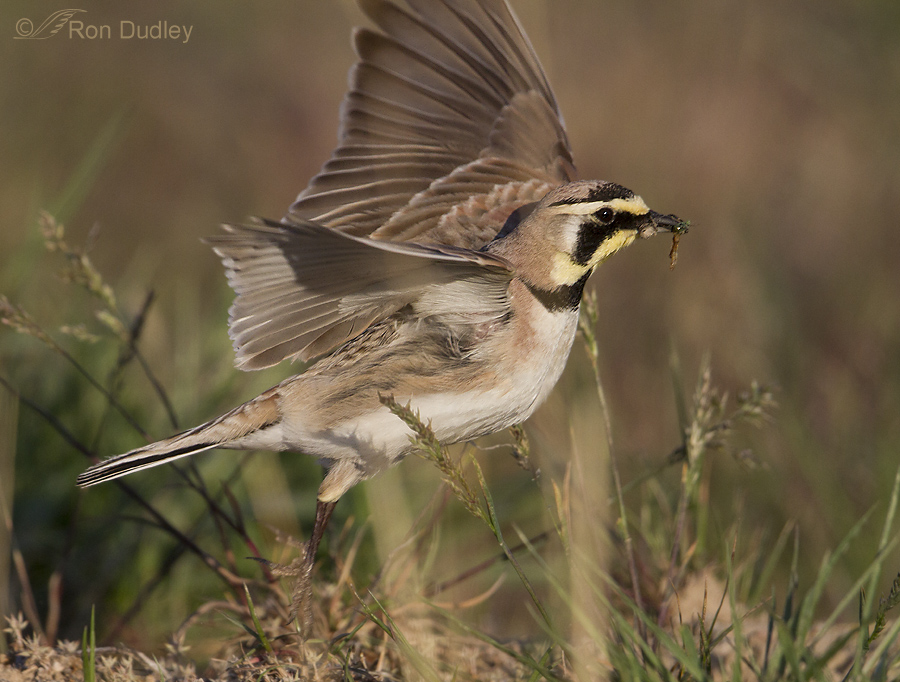
1/3200, f/5.6, ISO 640, Canon 7D, Canon EF500mm f/4L IS II USM +1.4 tc, not baited, set up or called in
but instead he flew off. I liked the shot even though I severely clipped a wing. I wondered if the reason he did so was because my pickup was so close (even though there’s regular traffic on this road) so we left to look for other opportunities.
One of the reasons I decided to do this post is because of the documentation of nesting. I grew up on a farm in northwest Montana where Horned Larks are almost as thick as the ubiquitous mosquitoes, horse flies and deer flies and I return to the farm often but in all that time I had never stumbled across a Horned Lark nest that I can remember. Now I know why. This nest was so very well camouflaged that even though I knew exactly where it was, when I looked away I couldn’t locate it again even with the bird on it.
Talk about cryptic!
Ron
Note: In preparing this post I found conflicting information about the diet of adult Horned Larks. BNA Online says that adults eat “mostly seeds” during winter and during the breeding season but the American Museum of Natural History’s Birds of North America says they eat “mostly insects in summer”.


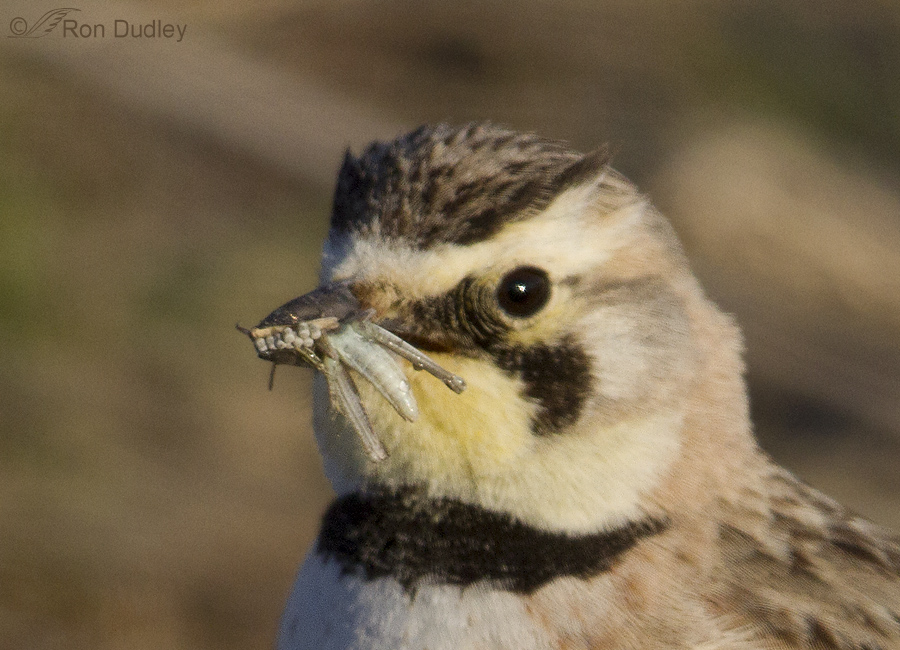
Thank you, everyone. My intention was to reply to comments earlier but the power’s been out for hours, don’t know why. Rigged up a generator to keep my fridge going and give me light so I could cook. Power came back on as I was cooking. Hope it lasts. No images worked up for tomorrow so that post is likely to be a single image. Roll with the punches I guess…
Love these pictures Ron. Glad you didn’t ahve time to change your lens. Can’t imagine these photos being any better.
What an incredible experience. And even more incredibly camoflague job. Thank you. And, like Patty, I love the intent and focused look.
Ron, I am so glad the bird and her nest were so well hidden. If you couldn’t see it no one will. Thanks especially for the shot of her yellow eye patch. Seems like the nestlings should have been begging or maybe their mouths were too full.
Sensational shots Ron! Amazing nature!
Charlotte
Very nice shots and information!
Wonderful shots. It’s great to know they camouflage their nest and themselves to ensure safety; and so glad you were able to briefly spot and share. Love the wing shot with his intent look.
Thanks, Patricia. Engineers who design stealth aircraft could take some lessons from these birds…
So true. I was watching about hummingbirds on Nova yesterday, and when the camera slowed WAY down, you could see their wings moving in a figure eight. Wow. I didn’t know. Or know other fascinating things about them – why I have so many with the Cooper’s Hawk around.
The more I learn about birds, the more intrigued I am. The more I watch, the more I see different species on our property. Yesterday there were a lot of yellow birds that I think I identified as Bulluock’s Oriole, Hooded Oriole and the Western Tanager.
So much to learn, and so much to enjoy. Appreciate everyone’s added input and info on your blog as I learn even more. I know how time consuming it is to sort through photos, edit, write and post your blog – so please know your time is much appreciated
These shots are absolutely great Ron, many thanks! Without her yellow throat showing you would never have seen her!! Just fantastic!!
Dick, Even when I was looking right at her, when she turned so the yellow and eye weren’t showing I simply could not see her or the nest.